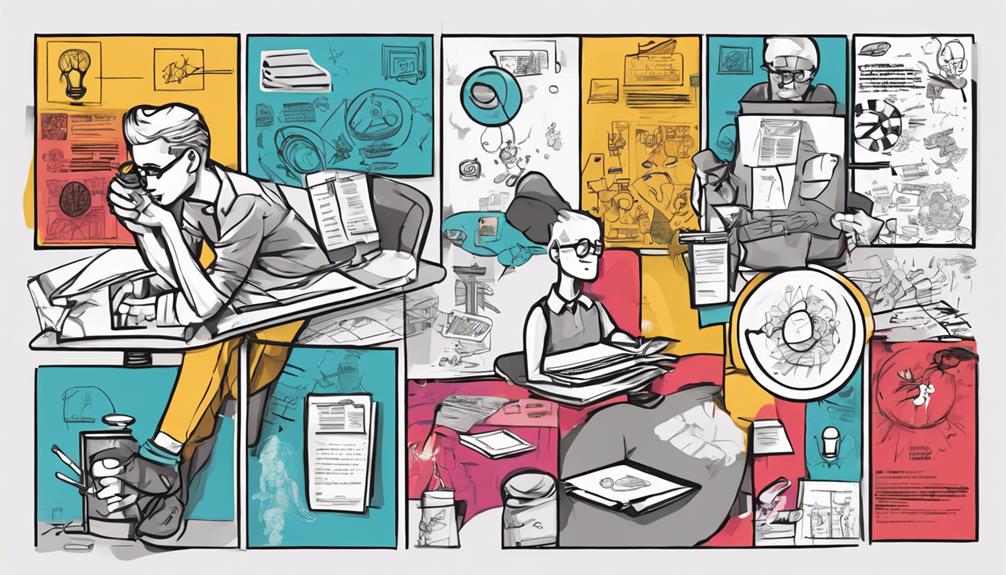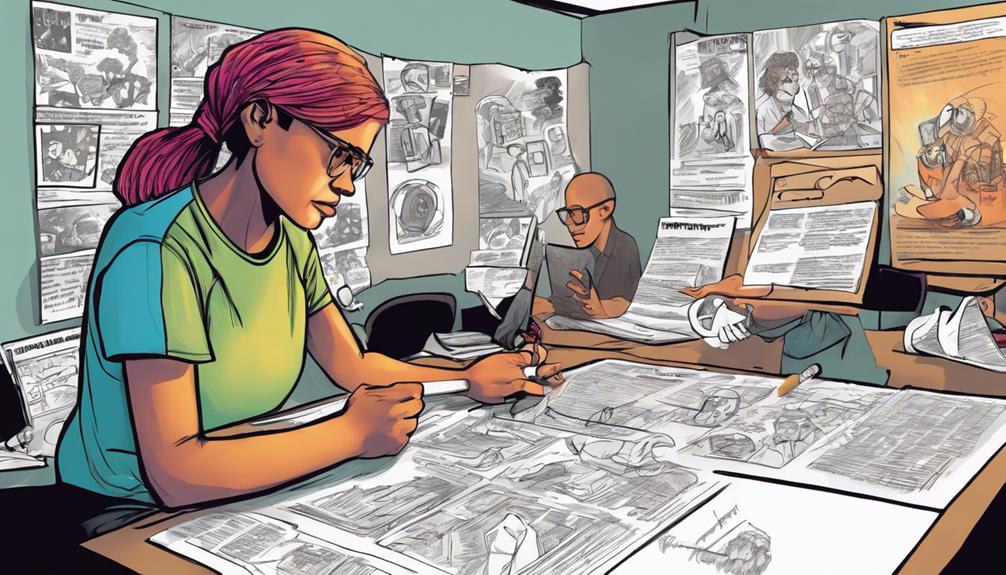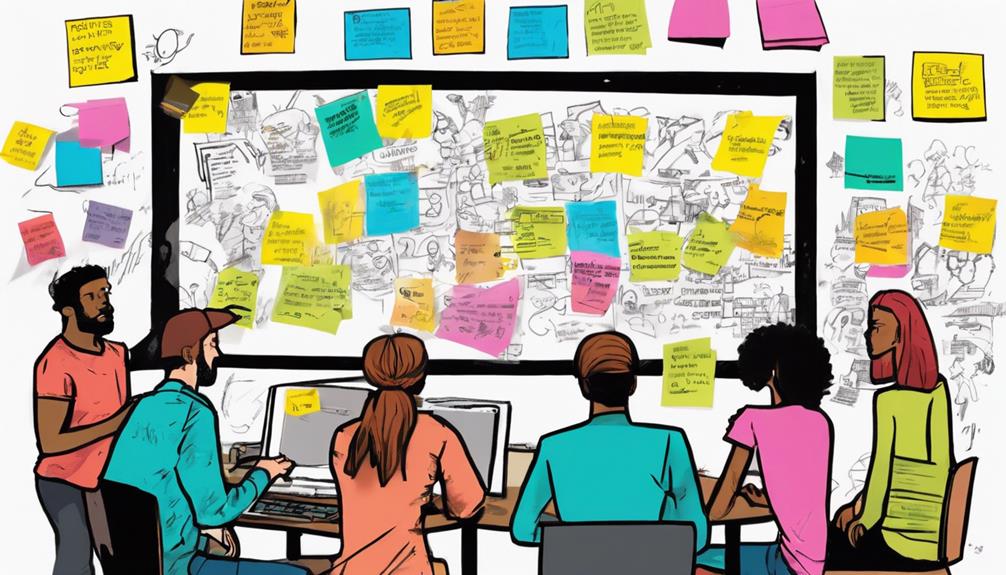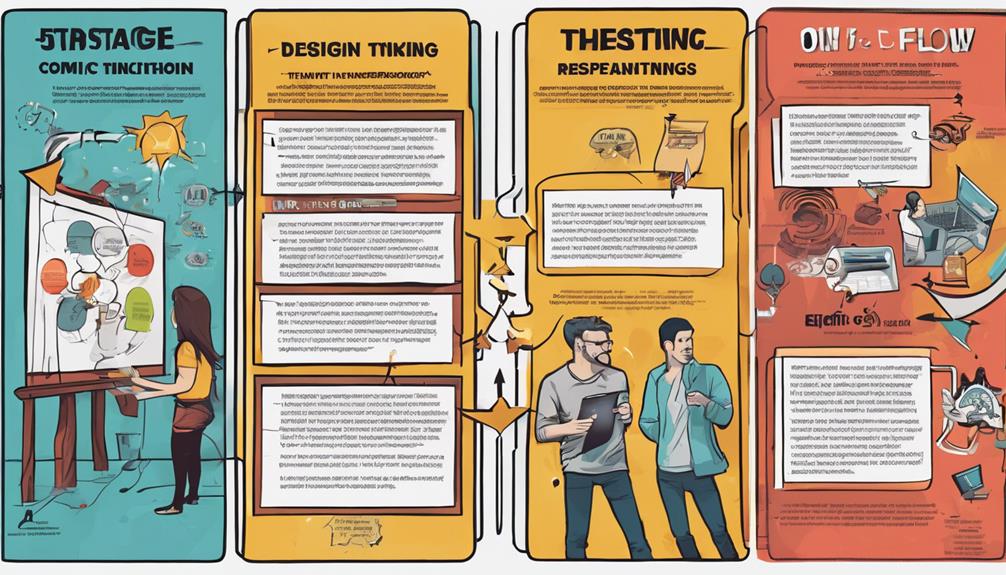In the Design Thinking Process, it's true that it focuses on user-centric innovation. The Empathize phase truly aims to understand user needs. Ideation indeed generates various solutions. Creating prototypes does translate ideas into tangible forms. The iterative approach does allow for continuous refinement based on user feedback. If you're curious to explore more nuances of this innovative problem-solving approach, there's a wealth of information waiting for you in the intricate world of design thinking principles.
Key Takeaways
- Design Thinking emphasizes user-centric innovation (True).
- Empathize phase focuses on understanding user needs (True).
- Iterative approach allows for continuous refinement (True).
- Prototyping facilitates visualization and testing of ideas (True).
- Ideation generates diverse solutions for problems (True).
Design Thinking Process Overview
The Design Thinking Process Overview introduces a creative problem-solving method that emphasizes user-centric innovation in organizations. At the core of the Design Thinking Process lies the empathize phase, where the focus shifts towards understanding the needs and experiences of users. By immersing yourself in the users' world, you can gain valuable insights that drive the ideation process.
Through ideation, diverse ideas are generated to address the identified user needs. These ideas are then translated into tangible forms through the creation of prototypes. Prototypes play an essential role in testing and refining potential solutions before full implementation, ensuring that the final product aligns with user expectations.
Furthermore, the Design Thinking Process adopts an iterative approach, allowing for continuous refinement based on user feedback. This iterative nature enables quick adjustments to problem statements and solutions, leading to more efficient and user-centric outcomes.
Understanding Design Thinking Principles
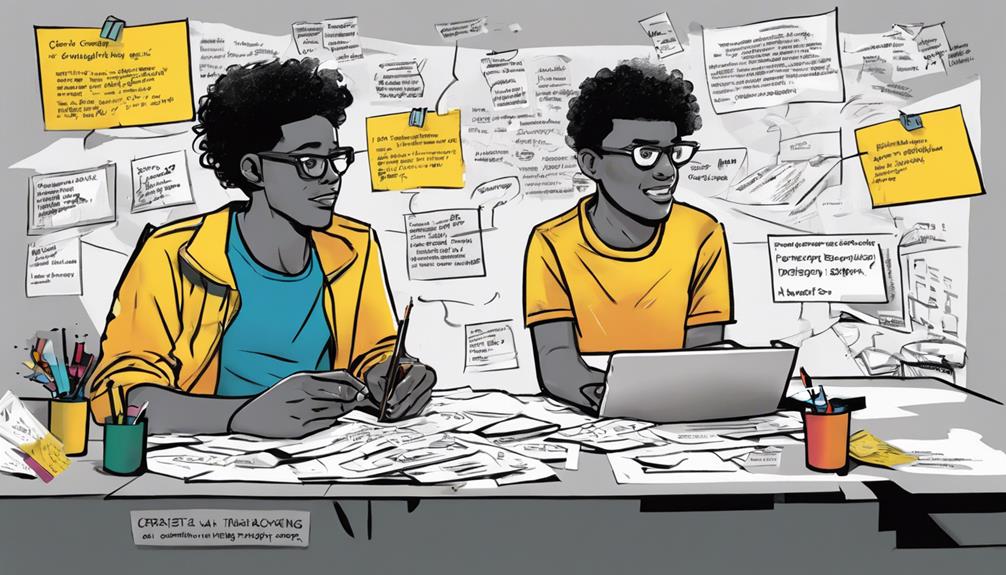
You should consider the core design principles, the user-centric approach, and the iterative problem-solving method when understanding design thinking principles.
These elements play a pivotal role in guiding the design process towards creating solutions that truly meet user needs and preferences.
Embracing these principles can lead to more effective and successful outcomes in your design projects.
Core Design Principles
Emphasizing user needs above all else, design thinking principles prioritize understanding the human experience in the design process. This approach ensures that solutions are tailored to meet real user requirements.
To explore further into the core design principles of design thinking, consider the following:
- User Needs: At the core of design thinking is the acknowledgment that solutions must address the explicit and implicit needs of the end-users.
- Human-Centered Solutions: Design thinking advocates for creating solutions that revolve around the experiences and behaviors of the people who'll use them.
- Prototyping: Rapid and cost-effective prototyping allows for ideas to be visualized and tested quickly, facilitating feedback and iteration.
- Iterative Approach: By embracing an iterative problem-solving process, design thinking enables continuous refinement and improvement based on user feedback and evolving insights.
These principles form the foundation of design thinking, guiding teams towards innovative and user-centric solutions through a collaborative and iterative approach.
User-Centric Approach
Placing the user at the center of the design process is essential in understanding design thinking principles. During the Empathize phase, design thinkers immerse themselves in the user's world to gain insights into their needs, desires, and challenges. This phase is vital for developing accurate Problem statements that guide the design process towards user-centric solutions.
Assumptions are challenged and revised as ideas are created, keeping the focus on addressing specific user problems. To guarantee the effectiveness of the solutions developed, design thinkers prioritize user feedback and testing solutions to users. This iterative process allows for continuous refinement based on real user interactions, validating that the solutions meet the users' needs.
When evaluating statements about the user-centric approach in design thinking, remember that this methodology selects True for the importance of understanding user needs, empathy towards users, and the rigorous testing of solutions to ensure user satisfaction.
Iterative Problem-Solving
Iterative problem-solving lies at the core of design thinking principles, driving continuous improvement and innovation in solution development.
Testing solutions is a fundamental aspect of design thinking, allowing you to collect feedback and insights to enhance your ideas.
Refining ideas through iterative processes ensures that your solutions develop to meet the changing needs and expectations of users.
Flexibility and adaptation are key benefits of iterative problem-solving in design thinking, enabling you to adjust your approach based on new information or challenges.
Prototyping is an essential step in the iterative problem-solving process, as it allows you to quickly visualize and test potential solutions before investing significant resources.
Examining Empathy in Design Thinking

To truly comprehend the users' needs and perspectives in the Design Thinking Process, empathy plays an important role. During the Empathize phase, designers deeply explore users' needs, behaviors, and emotions.
By stepping into the shoes of the users, you gain valuable insights that fuel the design process towards creating solutions that authentically address user problems. This phase is essential for crafting human-centered designs that truly resonate with the target audience.
Through empathy, you can establish meaningful connections with users, leading to the development of intuitive and user-friendly solutions. It's through this empathetic understanding that designers can create products and services that not only meet users' needs but also evoke positive emotions and experiences.
Empathy is the cornerstone of design thinking, guiding you to design solutions that genuinely make a difference in the lives of your users.
Key Elements of Ideate Phase
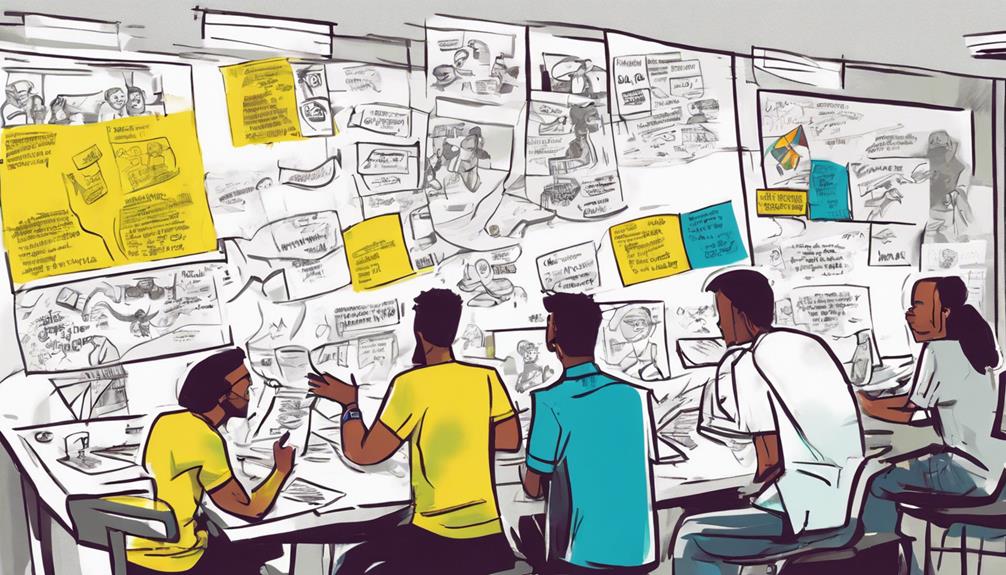
During the Ideate phase of the Design Thinking Process, you focus on generating a wide range of creative ideas to address a specific problem or challenge.
Here are some key elements of the Ideate phase:
- Thinking Outside the Box: Participants are encouraged to think innovatively and explore unconventional solutions without limitations during this phase.
- Brainstorming and Idea Generation: Brainstorming sessions, idea workshops, and creative exercises are commonly used to foster innovation and divergent thinking.
- Challenging Assumptions: The Ideate phase aims to challenge assumptions, break traditional thought patterns, and inspire new perspectives to solve complex problems.
- Preparing for Testing and Prototyping: Ideas generated in the Ideate phase are refined, tested, and potentially implemented in the subsequent stages of prototyping and testing.
Evaluating Prototyping in Design Thinking
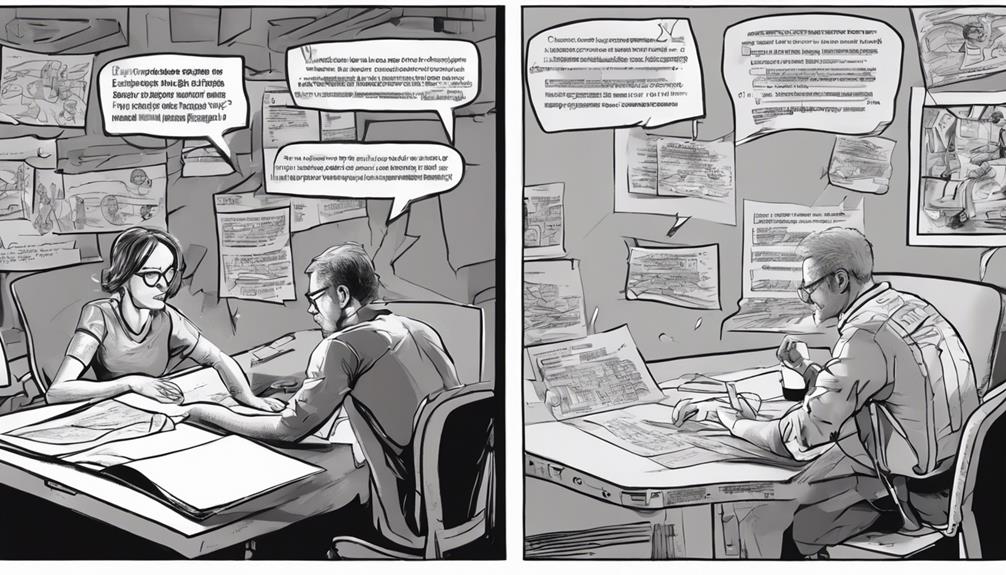
When evaluating prototyping in design thinking, consider factors like:
- The fidelity of the prototype
- The feedback received from users
- How well the prototype aligns with the initial design goals
Evaluating prototypes can help refine ideas, test assumptions, and improve the overall design process.
Prototyping in Design Thinking
Prototyping in design thinking plays a pivotal role in evaluating and refining potential concepts before moving forward with full-scale development.
When building prototypes, it's crucial to take into account the following:
- Early Identification of Flaws: Prototyping allows designers to pinpoint potential flaws or areas for improvement in the concept at an early stage, saving time and resources in the long run.
- Gathering Valuable Feedback: Through prototypes, designers can collect feedback from users or stakeholders, enabling iterative improvements and innovation in the final product or service.
- Visualization and Refinement: Prototyping helps in visualizing ideas and refining them based on practical testing, ensuring that the end product meets the needs and expectations of the target audience.
- Cost-Effective Iterations: By challenging assumptions and testing solutions through prototypes, designers can iterate cost-effectively, leading to the development of policies and structures that align with user needs.
Effective prototyping not only helps in refining ideas but also guarantees that the final product or service resonates with the end-users.
Evaluation Criteria for Prototypes
To assess prototypes effectively in the design thinking process, consider key evaluation criteria such as functionality, usability, feasibility, and alignment with user needs. Evaluating prototypes based on these factors allows for a thorough understanding of how well the design meets its intended purpose.
Functionality assesses whether the prototype performs its intended functions correctly. Usability focuses on how user-friendly the prototype is and whether it provides a positive user experience. Feasibility evaluates if the prototype can be realistically implemented within given constraints. Alignment with user needs guarantees that the prototype addresses the specific requirements and preferences of the target users.
Gathering feedback from users during prototype testing is vital as it provides valuable insights for refining and enhancing the design. Through iterative testing, teams can continuously improve the prototype based on user feedback, identifying strengths, weaknesses, and areas for improvement to create a successful final product or solution.
Myth Busting in Design Thinking
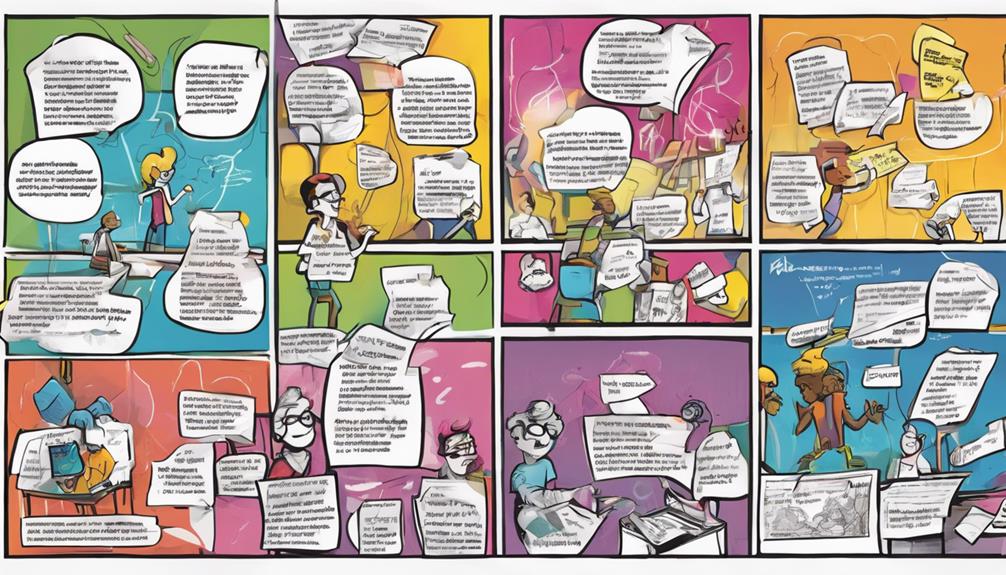
Debunking misconceptions about design thinking is crucial for gaining a deeper understanding of the process. Here are some key points to keep in mind:
- Myth busting in design thinking involves addressing common misconceptions or false beliefs that may hinder the application of the methodology.
- The goal of myth busting is to clarify misunderstandings and provide accurate information about how design thinking works in practice.
- By dispelling myths, individuals can grasp the principles and benefits of using design thinking for effective problem-solving.
- Engaging in myth busting activities promotes a more informed and knowledgeable approach to utilizing design thinking methodologies, leading to more successful outcomes.
Applying Design Thinking Iteration
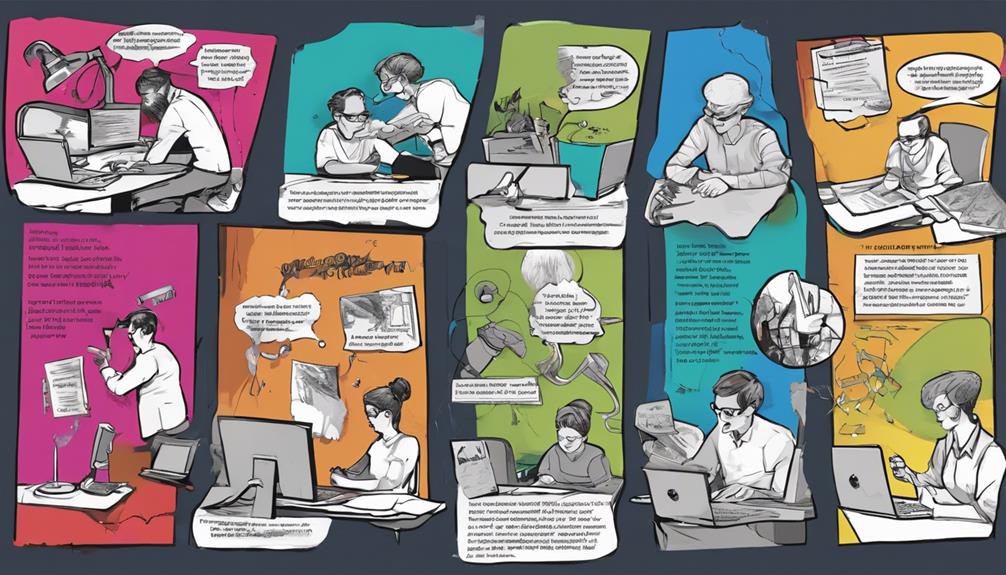
Addressing misunderstandings about design thinking leads to a better grasp of how applying design thinking iteration enhances problem-solving processes.
Iteration in design thinking involves a cyclical process of ideation, prototyping, testing, and refining solutions based on user feedback. By embracing iterative cycles, design thinkers continuously improve and adapt their ideas to better meet user needs.
This approach allows for the discovery of new insights and guarantees that solutions are refined iteratively to address evolving requirements.
Through prototyping and testing, design thinkers gather valuable user feedback, which serves as a guide for refining solutions in subsequent iterations. The iterative nature of design thinking encourages flexibility and fosters innovation by promoting a user-centered approach to problem-solving.
Frequently Asked Questions
Is Design Thinking a Tool for Entrepreneurs True or False?
Design thinking is undeniably a valuable tool for entrepreneurs. It enables you to empathize with customers, generate innovative ideas, and iterate on solutions effectively. Embrace this approach to drive business innovation and create impactful solutions.
Is the Design Thinking Process True or False?
Alright, the design thinking process is true. It's a creative problem-solving method that prioritizes user needs. By empathizing, defining, ideating, prototyping, and testing, you can create innovative solutions that put humans at the center.
Are Assumptions Challenged and Ideas Are Created in the Ideate Phase True or False?
During the ideate phase of the Design Thinking Process, assumptions are challenged and new ideas are generated. This phase focuses on brainstorming, encouraging creativity and innovation to explore diverse solutions before narrowing down the most promising ones.
Is Building Prototypes the Final Phase of the Design Thinking Process True or False?
You don't stop at building prototypes; there's more to explore. The Design Thinking Process involves refining, testing, and iterating after prototyping. It's a continuous journey of improvement based on user feedback. Keep pushing forward.
Conclusion
To sum up, the design thinking process provides a valuable framework for innovation and problem-solving.
By embracing empathy, ideation, and prototyping, you can create meaningful solutions that address real user needs.
Remember, design thinking is a dynamic and iterative approach that requires openness to feedback and a willingness to challenge assumptions.
Embrace the process and watch your creativity flourish.
